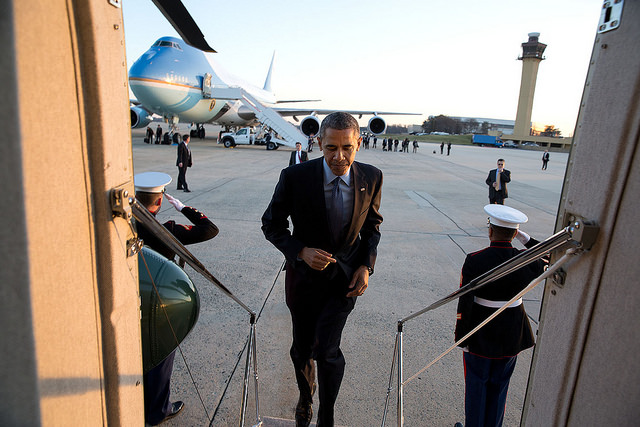
The 44th president had successes — and failures — in manufacturing policy.
Pundits, partisans and historians will spend plenty of time determining the economic legacy of President Barack Obama’s presidency.
I’ll be the first to say it: President Obama did a lot for manufacturing. Some efforts big, some nascent.
Let’s begin with the works in progress: He launched the Manufacturing USA network of institutes — a string public-private partnerships meant to cultivate innovation and R&D in emerging industries. Consider the MIT-led Advanced Functional Fabrics of America Institute, built to encourage the private commercialization highly functional fibers and their manufacture; or the National Additive Manufacturing Innovation Institute, at Youngstown State in Ohio, which is on the edge of the 3D-printing revolution.
Other programs are working on lightweight metals, extra-efficient semiconductors, and digital manufacturing. All are growing into important resources for the fields and specialties they inform.
He saved the American auto industry as we know it by extending a line of credit to GM and Chrysler in 2009. Some call it a bailout; I’d call it guaranteeing the economy of many or our heartland states. Even some critics of the president and the bailout acknowledge it wildly exceeded their expectations.
In simply functional terms, it worked; all of those government loans were repaid ahead of time. And all of these instances auto-production reshoring that President-elect Trump has celebrated in the last six weeks? There would have been nothing to reshore had Obama not stepped in years before.
This president made sure commonsense “Buy America” policies were maintained in the 2009 Recovery Act that funded infrastructure projects around the country. What’s more, he tied them into funding for high-speed rail development, so that its American industries and workers that benefit from such spending.
He pursued selective trade enforcement measures throughout his presidency in industries like tires, steel, and auto parts. Those actions relived the pressure on — and sometimes saved — thousands of American jobs from the mercantilism of countries like China.
But most importantly of all, President Obama set a goal. During his 2012 State of the Union, President Obama placed a “Blueprint for an America Built to Last” — a suite of policies to improve the manufacturing sector — front and center among his proposals, and announced a target of 1 million new factory jobs by the end of his second term.
Yet he didn’t reach that goal. This president’s time in office was marked by a number of missed opportunities on manufacturing policy, big and small again. Among them:
He didn’t tailor the controversial “cash for clunkers” plan to only include American-made automobiles, which could have stimulated more production and jobs.
He failed to use the considerable powers of his office to deter currency manipulation by our trading partners — China, in particular — when it was particularly harmful to the U.S. economic recovery he was leading.
And after inheriting it, his administration negotiated a Trans-Pacific Partnership that largely disappointed on key manufacturing issues like currency and rules of origin. Its weakness in these areas left it open to heavy criticism from all corners (Donald Trump, Hillary Clinton, Bernie Sanders, and most of America’s industrial unions oppose it) and has contributed to its failure.
Now comes another’s term.
President-elect Donald Trump enters the White House on the wings of thousands of words of bluster, hyperbole, threat, and promise. The man’s campaign slogan, after all, was “Make America Great Again,” and the revival of American manufacturing — a topic on which Mr. Trump has spent a considerable amount of time — fits neatly into that motif.
President-elect Trump will be gifted in Washington with a House and Senate of his own party, and the threat of constant obstruction, which hung heavily over Obama administration policy initiatives, will immediately be lifted. Will the road be cleared now for the industrial revival that Mr. Trump has promised?
Time will tell. In these hours of transition, though, take a moment how far we’ve come. America lost roughly a third of the good-paying 18 million manufacturing jobs in the first decade of this century, and under President Obama’s leadership since 2010 we’ve clawed about 800,000 of them back.
He could have done more, or much less.
Regardless, some important groundwork has been laid, and now more needs to be done. Donald Trump is about to assume the presidency. Where will manufacturing go from here?
